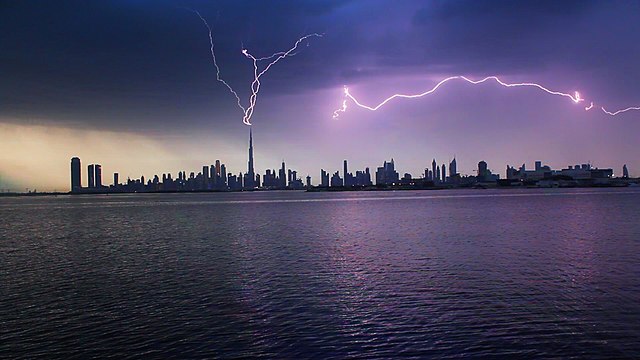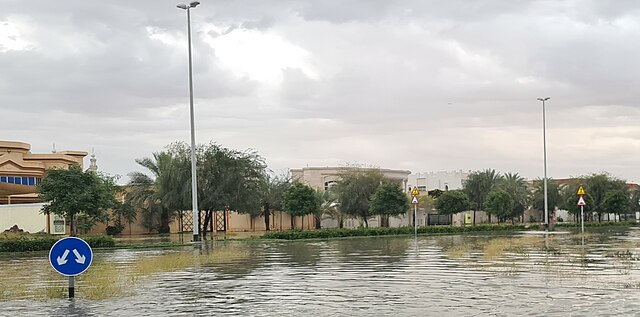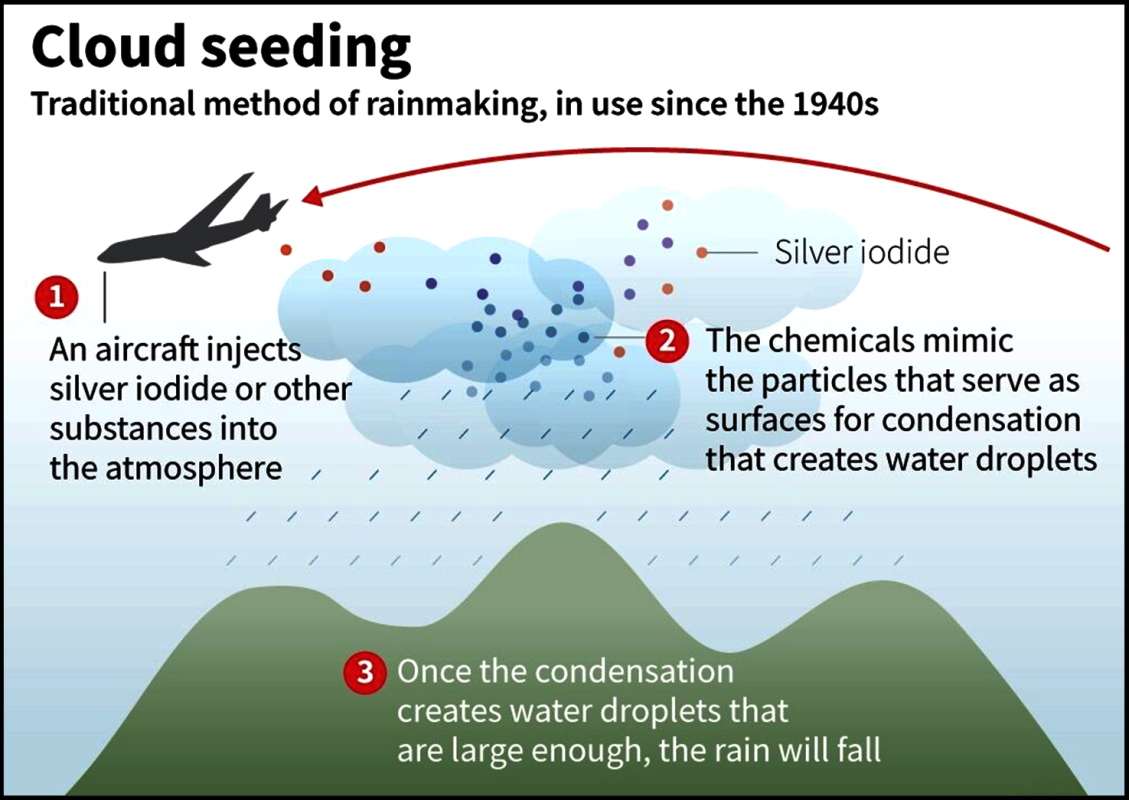 On April 16, the glitzy city of Dubai was drenched by a historic downpour.
On April 16, the glitzy city of Dubai was drenched by a historic downpour.
Lightning strikes flashed around the peak of the famous Burj Khalifa, while roads and high-end shopping malls alike became inundated with floodwater.
As highways turned to rivers, residents were seen rowing boats across downtown, and one man even jetskied around his neighborhood!
This week, rains in Oman and the United Arab Emirates have shattered records. Let’s take a closer look.
A Deluge in the Desert
 Though the massive storms were forecasted several days before they occurred, rainfall events of large magnitude are rare in desert countries.
Though the massive storms were forecasted several days before they occurred, rainfall events of large magnitude are rare in desert countries.
On April 14, the storm first landed in Oman, killing 21 people and leaving devastation in its wake. By April 16 and 17, it moved into the United Arab Emirates.
The UAE government has announced that the rainfall is the heaviest in the nation’s meteorological history, which extends back to 1949. In some areas, nearly 10 inches (250 mm) of rain fell in less than 24 hours! And in just 12 hours, Dubai alone received more rain than it does in an entire year.
What Could Be Some Reasons?
On social media, many onlookers have speculated that the UAE government’s cloud seeding program is to blame. The program, which began in the 1990s, has sought to increase precipitation by releasing salt particles and chemicals into clouds.
 However, these theories misunderstand how cloud seeding works. Let’s take a closer look at how precipitation occurs to better understand this.
However, these theories misunderstand how cloud seeding works. Let’s take a closer look at how precipitation occurs to better understand this.
Clouds form when water vapor cools in the atmosphere. Though they may look like fluffy cotton, clouds are composed of minuscule water droplets and ice crystals.
When the air gets saturated with moisture, the droplets condense around small, suspended particles like salt, smoke, or dust -- known as CCN or Cloud Condensation Nuclei. When the particles become heavy enough, they fall to the ground as precipitation.
This is where cloud seeding comes in. Contrary to popular belief, cloud seeding doesn’t create rain out of thin air, as it can’t create moisture where it doesn’t exist. Instead, it targets clouds to try and encourage available droplets to precipitate. Because of this, when a thunderstorm has fully developed and precipitation is already occurring, cloud seeding would have no effect.
Experts suggest that the massive rainfall is more likely the result of a normal weather system, exacerbated by global warming. Seawater around the UAE has continued to rise and heat up, while the air above has become hotter. These warmer conditions increase moisture in the atmosphere and make more drastic weather events more likely to occur.
Unused to such rainfall, Dubai and other Middle Eastern cities lack adequate drainage systems. Now, as extreme weather becomes more common, even desert cities may need to improve their infrastructure to adapt to a changing future.
Sources: NY Times, Guardian, BBC, Al Jazeera, Reuters, CNN







